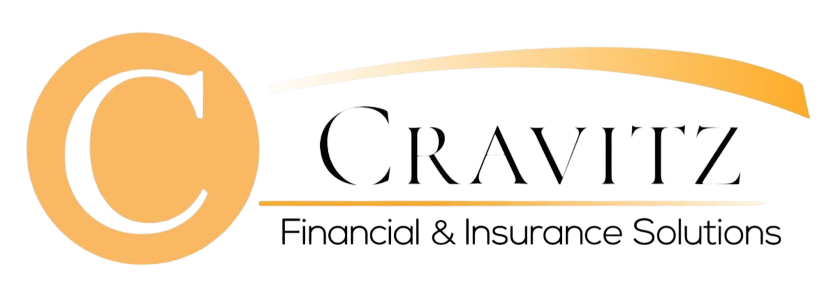In this video I'm sharing what you need to know about the rule of 55. If you are planning to retire early or if you leave your job prior to age 59.5 you might be able to access the funds in your 401(k) without having to pay the 10% penalty.
I will go over the rules you need to know, and will share some thoughts on whether it makes sense to actually use the rule of 55.
Link to the IRS page mentioned in the video:
https://www.irs.gov/retirement-plans/plan-participant-employee/retirement-topics-exceptions-to-tax-on-early-distributions

News You Can Use
Get actionable financial advice delivered to your inbox a few times a month.
Full Transcript:
(00:00):
Perhaps you'd like to retire early before 59 and a half, and you'd like to have access to the money that's in your 401(k), but you're concerned about that 10% penalty. Or maybe you lost your job or you quit your job and you haven't yet reached 59 and a half, and again, you're concerned about that penalty. Well under something that's called the rule of 55, which we'll talk about here in just a second. You may be able to not have to pay that penalty. Let's talk about how it works. If you leave your job in the calendar year that you turn 55 or older, the 10% penalty is waived if the plan allows it. It's really important because the IRS might allow it, and we'll look at that on the next screen. But your specific 401(k) plan also has to allow it.
(00:48):
So my suggestion is, if you're thinking about doing this, is to call your HR department. Ask them if this is available in the specific 401(k). You also want to take a look at the summary plan description of the actual 401(k) plan as well. The other thing to note here is that it says the calendar year that you turn 55. So if you leave your job, let's say in January, and yet your birthday isn't until June perhaps, then that's fine because again, your birthday was within the same calendar year. Now, next thing here is, and this comes from the IRS website, there are several different exceptions by the way, to the 10% penalty. I am just speaking of the rule of 55 or specifically the separation from service. Also, of note here is that I'm only talking about 401(k)'s and other qualified plans. I'm not talking about certain government plans. With certain government plans you may be able to access that money even prior to 55 without that 10% penalty.
(01:55):
The other thing that's important to note here is that I am not talking about IRAs or SEP IRAs or SIMPLE'sor even SARSEP's. Okay? None of those, because you cannot utilize this rule of 55 with an IRA or SEP or SIMPLE, any of those. Again, there's several different exceptions to the 10% penalty. Some of them only apply to qualified plans, 401k(s). Some of them only apply to IRAs, SEPS and SIMPLE's. So you have to know which one applies to which, but again, specifically for this, it only applies to 401(k)'s and qualified plans. Another thing that's important to note here is that this does not apply if you left your job prior to 55. So if you left your job at 54 and you're thinking, okay, next year I'm going to go ahead and withdraw this money out of the 401(k) when I turn 55 and I won't have to pay this penalty. It doesn't work like that. Okay?
(02:56):
Again, you have to separate from service in the calendar year that you turn 55. Another thing to note is that this only applies to the 401(k) from your most recent employer. So if you have another 401(k) or maybe two or three other 401(k)'s from previous employers out there, this does not apply to those, okay? Now, it's not to say that you may be able to roll the money from an old 401(k) into that newer 401(k). That could be a possibility, but you can only withdraw money from your most recent 401(k) and not have to worry about that 10% penalty under this rule. Another thing to note is, again, the balance must be in the 401(k) while taking early withdrawals. So I already kind of mentioned this, but it's important to kind of reiterate this. You cannot have the money into 401(k). Then roll it into that IRA, then take the money out from that and think that you don't have to worry about the 10% penalty because you waited until 55, and all of that. It doesn't work that way.
(04:04):
Okay? Another thing to note is you can still withdraw money even if you get another job. So let's say you lost your job and you need money. You don't have enough money in other accounts, and you want the money or need the money from the 401(k). You can do that. That's not a problem. Even while you get the new job, you could still withdraw the money from that 401(k) that we're talking about here. Now, finally, should you use the rule of 55? Here's what I will tell you. I've worked with many people over the years. I've talked with many, many more over the years, and very seldom does anybody that I see utilize the rule of 55. It's not to say that it might apply to you, and it's another arrow in the quiver, and it's important to know how it works in case you need to use it.
(04:56):
But typically what I find is that if you're looking to retire early, maybe as early as, let's say 55, and you can't withdraw money typically until 59 and a half, perhaps your spouse is still working and they provide enough income for the both of you. Perhaps you have other savings or investments that you can tap into just to kind of bridge the gap there for a few years. So it doesn't typically come up too often, but sometimes for some people it does. So hopefully this has been helpful. If it has, make sure that you like the video. Make sure you you subscribe, and I'll see you soon.
